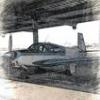Fatal Cirrus accident last night in Vegas
-
Members Online
- AndreiC
- Speed Brakes
- McMooney
- 1980Mooney
- HunterB
- spistora
- bamace
- Fly Boomer
- Igor_U
- pirate
- hammdo
- jeff.reynoljm
- NewMoon
- kortopates
- Stan
- Matt M
- Gee Bee Aeroproducts
- Lumberg
- Jblanton
- Mike Reed
- MikeOH
- TCC
- M20S Driver
- mikey757
- 00-Negative
- Ronnie Pool
- Larry
- kilobravo3
- Jetdriver
- OneSaltyItalian
- FredG
- deving22
- FlyingDude
- redbaron1982
- katzhome
- Rmfriday
- Nilium
- UteM20F
- Ron McBride
- Aerodon
- mike_elliott
- rbmaze
- MDMooney
- KASE


Recommended Posts
Join the conversation
You can post now and register later. If you have an account, sign in now to post with your account.